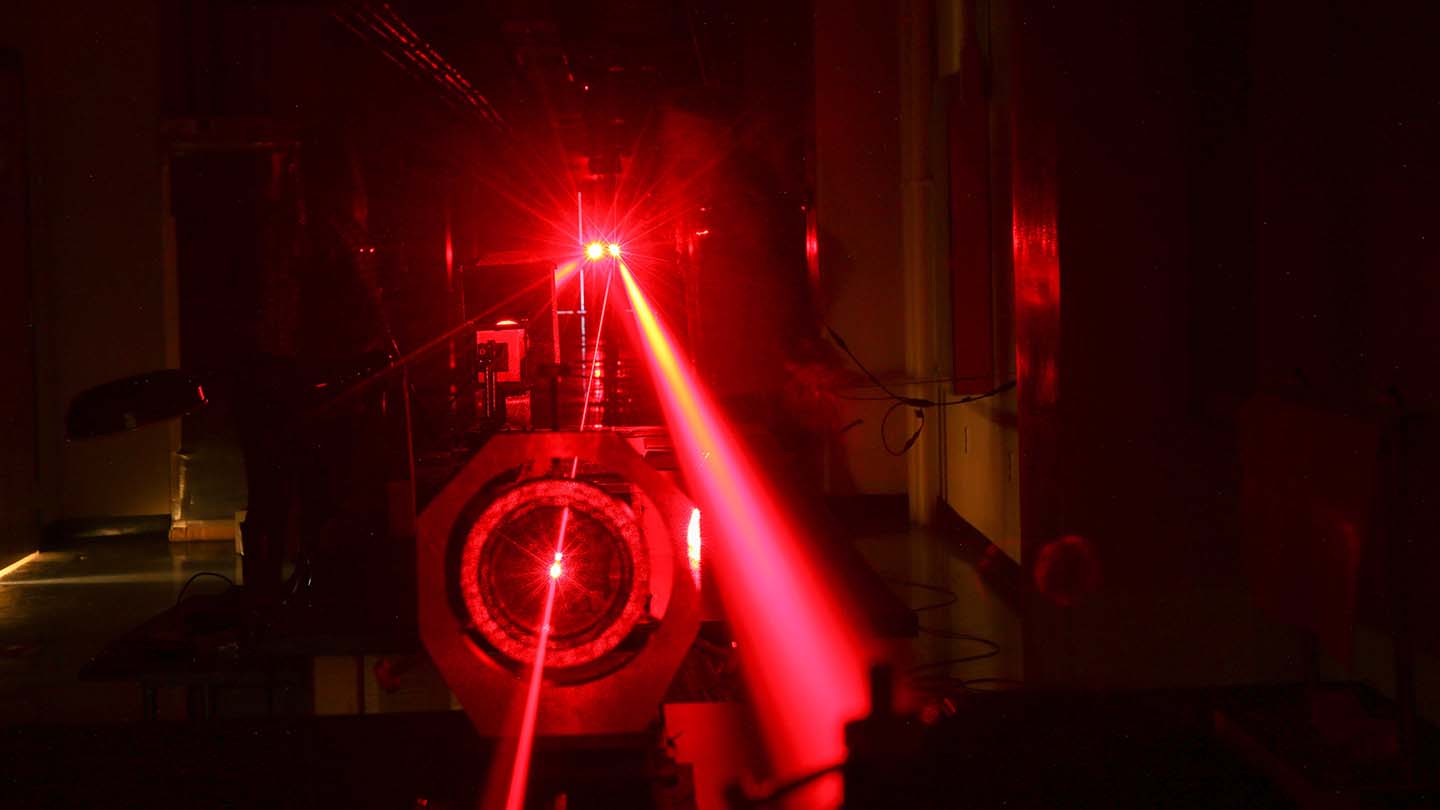
A powerful laser beam is generated in the Physics Department's Optical Turbulence Lab, where laser light propagates a total distance of 150 meters indoors for research conducted by Dr. Don Gregory, distinguished professor of physics.
Michael Mercier | UAH
The University of Alabama in Huntsville (UAH) has achieved the highest research activity rating in the current, 2021 update of the Carnegie Classification of Institutes of Higher Education.
UAH, a part of the University of Alabama System, is ranked as “R1 – Very high research activity” status among doctoral-granting universities in the Carnegie rankings. R1 universities apply the most resources and scientists to research at their institutions. The rankings are performed every three years. UAH last was ranked R1 in 2014.
In fiscal year 2020, the most recent period available, UAH performed $131.6 million in externally funded research, a large amount relative to its size.
“Attaining R-1 status is the result of the outstanding work of so many people at this great institution, including our research centers, faculty, students and administration,” says Dr. Chuck Karr, interim UAH president.
“I also want to recognize the support we receive from our Huntsville partners in government and industry, as well as the support of our delegations,” Dr. Karr says.
UAH governmental research partners include the U.S. Army, the Missile and Space Intelligence Center, the Missile Defense Agency, NASA, the FBI, the National Weather Service and others.
“UAH has always and will continue to place emphasis on research and the discovery of new knowledge, and on incorporating our students into these efforts,” Dr. Karr says.
Dr. John Christy, UAH interim vice president for research and economic development, says the Carnegie ranking indicates the confidence UAH’s research partners have in the university.
“Being rated at the highest level of research activity acknowledges the nationally-ranked status of UAH’s research enterprise,” Dr. Christy says. “This in turn attracts the brightest and most curious minds, both in our students and our researchers, to become part of our team. It alerts those who need new knowledge and discoveries that we have the expertise to provide answers.”
Dr. Bob Lindquist, who is currently serving as the interim UAH provost but was the vice president for research and economic activity as UAH prepared for the new rankings, says the new status recognizes the campus-wide nature of UAH research that involves faculty, researchers and students.
“The R1 rating recognizes the work of the existing faculty and researchers, but very importantly, it helps UAH recruit the very best faculty and researchers in their fields,” Dr. Lindquist says. “Top researchers want to be at an R1 institution.”
Those faculty and researchers will be mentoring UAH’s students, who will in turn benefit by being led by the best, he says.
“We’ve always had an excellent track record as far as research expenditures, but this is a recognition of all the excellent work that’s been done, and it recognizes the university as a whole,” Dr. Lindquist says. “It was a campus-wide effort that was needed to achieve this classification.”
Starting in 1970, the Carnegie Commission on Higher Education developed a classification of colleges and universities to support its program of research and policy analysis. The Carnegie Classification has been the leading framework for recognizing and describing institutional diversity in U.S. higher education for 45 years.